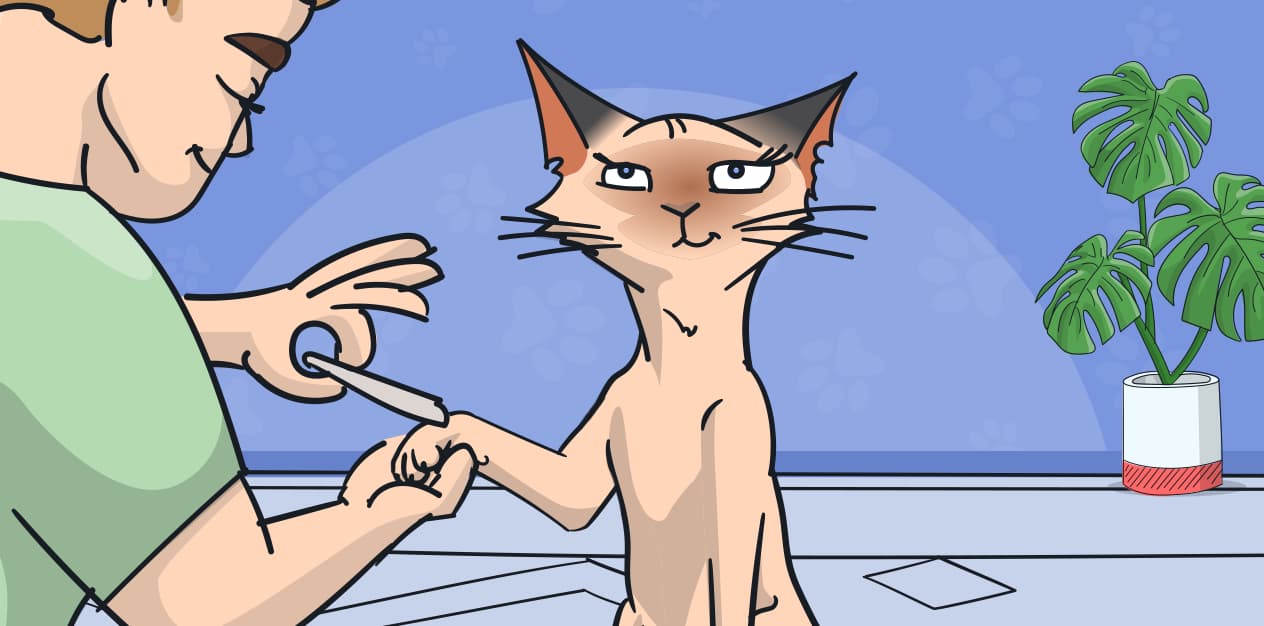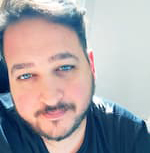

File This Under ‘Crucial to Know’ – How to Care for Your Cat’s Nails
Forget expensive mani-peds and pet spas – taking care of your cat’s claws is an essential, not a luxury. The trick is doing it right – because the price for doing it wrong can often be painful, for both of you. Here’s your one-stop shop guide for caring for cats’ nails.

Writer Jannah Berkley
5 min read

You might love your cat more than anyone, but your hole-filled couch begs to differ…and your torn rug…and your favorite pair of now-ripped pants. Your cat’s nails are just like ours: they grow continuously, day in and day out. So there always comes a point when every cat owner needs to tame their cat’s claws.
But what is the most humane way to deal with sharp nails? How can you stop getting scratched and still take care of your furry friend? Here’s a breakdown of all the ways you can care for your cat’s paws, with less claw chaos.
Trimming cat nails
This is the first thing that any vet or other experienced cat owner will recommend. Plus, it’s totally doable at home if you have the right tools and setup.
First of all, make sure you have cat nail clippers and that you give your cat time to inspect and get to know the clippers before you use them. Take some time to get used to using the clippers (or ask your vet to show you how to use them for the first time!). Your cat will act out if you’re nervous, so make sure you’re feeling confident about using the clippers and holding your cat in place.
Create a comfortable environment and wait until a time of day when your cat is relaxed. Each cat will have a physical position they prefer, but the most common one is with your cat sitting on your lap facing away from you. If they love belly rubs, you can try doing this with them on their back.
Gently rub and massage your cat’s paws until you expose their nails. You only want to cut the clear tips. The pink part of the claw is called “the quick” and this has blood vessels and nerve endings in it. If you avoid touching this part, you won’t cause any pain.
You can trim your cat’s nails every few weeks, or as you start to see (or feel) their claws growing sharp again.
Cat scratch posts
Give your cat a place where they can scratch freely! Scratch posts or boards are great for this. You can get all sorts of cool designs in cardboard or rope. This way they can blend into the design of any room. Any room your cat is allowed in should have a designated spot for them to scratch and play. This should help stop them digging into all those other precious surfaces.

Nail caps
Not to be confused with a cat manicure, these colorful vet-approved nail toppers can be a great help. SoftPaws are nail caps that were developed by vets to be a kinder way to take care of their nails. There are a few myths about nail caps out there, but overall they’re a non-invasive and fun-colored option to prevent scratching.
Scratch-proof furniture
If you got your cat before furnishing your house, it’s definitely a good idea to invest in scratch-proof fabric on your sofa, chairs, and other furniture. But if you’re already committed to what you have in your home, you can add cat deterrents around the house. Tin foil, sticky tape, and pheromone spray can all be used to keep them from scratching in certain areas.
Training
Like any pet, you can teach your cat not to scratch with proper training. It’s important to correct this behavior right away, though – before it becomes a habit that they can’t unlearn. When they scratch you, give a loud and big response. Yell “owww”, dramatically pull your body away and show on your face that it hurt you. You can apply the same techniques to certain pieces of furniture. Also, redirect their attention to a toy, a scratch post, or to somewhere that they can use their nails freely.
Declawing a cat
The medical procedure for declawing a cat is called a Feline Onychectomy. For this procedure, a kitten is put under anesthesia and their claws are removed so that they won’t ever grow back. Potential side effects include bleeding, infection and residual pain.
This is a practice that some pet owners do, but many vets consider it inhumane. It’s quite an invasive procedure, and many vets would recommend all other nail care options before making this choice. It’s actually illegal to declaw cats in many countries and cities around the world.
There are a ton of things you can do at home for claw maintenance. But to avoid any big faux paws, it’s always best to consult with your vet. With Animalia Pet Insurance, your cat’s always covered. Full disclosure: we do not cover declawing, as claws are not a medical problem. Animalia – clean cut claws without worrying about the cost!





We offer the most
comprehensive coverage
out there
car with a spare tire for life’s bumps.
Having Animalia is like a pimped-out
Rolls Royce with a swimming pool
in the trunk.



Get your pet insurance quote
Pet type
- Dog
- Cat
What is your pet's name?
Zip code






